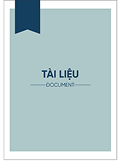Tài liệu
Financial integration and macroeconomic volatility in Zimbabwe

Xem mô tả
155
Xem & Tải
0
Tóm tắt
Purpose – Many developing countries are pursuing policies that foster international financial integration after decades of financial repression. Greater access to foreign financial markets may have both positive and negative impact on the performance of the economy. One of the concerns of international financial integration is macroeconomic volatility which may affect both monetary and real sectors. Zimbabwe has chosen to pursue a financial liberalization strategy in the form of imperfect financial integration following periods of excessive domestic shocks. An upsurge of capital flows since the epic of economic crisis in the 2000s has been observed with varying macroeconomic impacts. This study empirically examines the impact of partial international financial integration on the volatility of macroeconomic variables. Design/methodology/approach – The study utilized an ARDL Model suggested by Pesaran et al., (2003) which is appropriate for short time periods. Findings – The results show that financial integration has a negative effect on output volatility while insignificant on consumption volatility. Practical implications – The study recommends that the country should gradually liberalize the capital account and properly sequence financial development reforms in order to minimize losses from global financial integration. Originality/value – The study used time series for Zimbabwe during a period of external imbalance, repeated economic cycles, sudden stops in capital flows and limited scope of imperfect financial integration. Findings in such an economy will be a referral for policymakers in other economies that would want to pursue international financial integration.
Mô tả
international business administration
Tác giả
Richard Makoto
Người hướng dẫn
Nơi xuất bản
Nhà xuất bản
Kinh Tế Quốc Dân
Năm xuất bản
2020
ISBN
1975-0020
ISSN
Từ khóa chủ đề
Financial integration , Consumption volatility , GDP volatility
Trích dẫn
Bộ sưu tập
Tệp tin

10-1108_JED-11-2019-0063.pdf
D:\NEU_DSpace\tapchitienganh
Dung lượng: 564.38 KBĐịnh dạng: pdf
Lượt xem: 0 Lượt tải: 0
